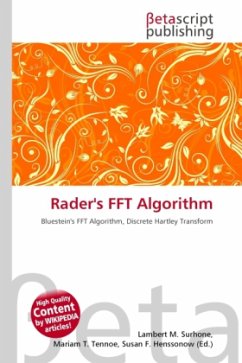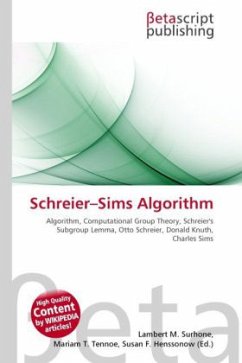
Rader's FFT Algorithm
Versandkostenfrei!
Versandfertig in 6-10 Tagen
23,99 €
inkl. MwSt.

PAYBACK Punkte
12 °P sammeln!
High Quality Content by WIKIPEDIA articles! Rader's algorithm (1968) is a fast Fourier transform (FFT) algorithm that computes the discrete Fourier transform (DFT) of prime sizes by re-expressing the DFT as a cyclic convolution. (The other algorithm for FFTs of prime sizes, Bluestein's algorithm, also works by rewriting the DFT as a convolution.) Since Rader's algorithm only depends upon the periodicity of the DFT kernel, it is directly applicable to any other transform (of prime order) with a similar property, such as a number-theoretic transform or the discrete Hartley transform. The algorit...
High Quality Content by WIKIPEDIA articles! Rader's algorithm (1968) is a fast Fourier transform (FFT) algorithm that computes the discrete Fourier transform (DFT) of prime sizes by re-expressing the DFT as a cyclic convolution. (The other algorithm for FFTs of prime sizes, Bluestein's algorithm, also works by rewriting the DFT as a convolution.) Since Rader's algorithm only depends upon the periodicity of the DFT kernel, it is directly applicable to any other transform (of prime order) with a similar property, such as a number-theoretic transform or the discrete Hartley transform. The algorithm can be modified to gain a factor of two savings for the case of DFTs of real data, using a slightly modified re-indexing/permutation to obtain two half-size cyclic convolutions of real data (Chu & Burrus, 1982); an alternative adaptation for DFTs of real data, using the discrete Hartley transform, was described by Johnson & Frigo (2007).












